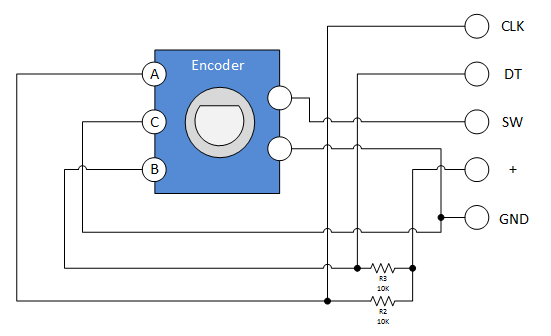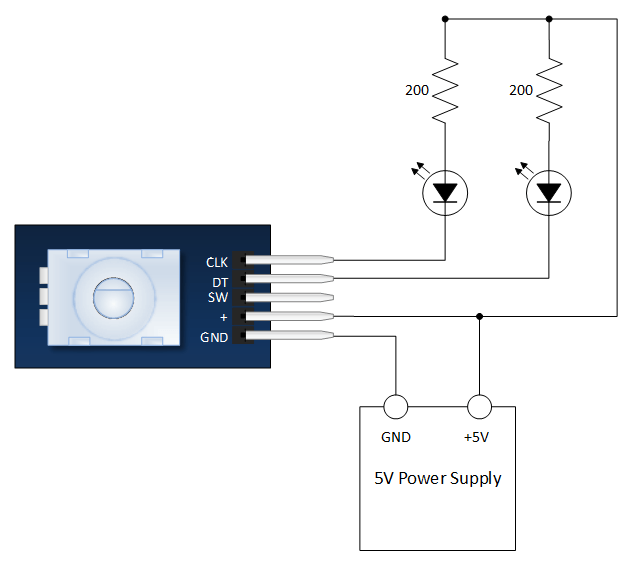Rotary Encoder Module KY-040
-
RM6.50
- Product Code: KY040
- Availability: In Stock
The KY-040 rotary encoder is a rotary input device (as in knob) that provides an indication of how much the knob has been rotated AND what direction it is rotating in. It’s a great device for stepper and servo motor control. You could also use it to control devices like digital potentiometers.
By rotating the rotary encoder can be counted in the positive direction and the reverse direction during rotation of the output pulse frequency, unlike rotary potentiometer counter, which species rotation counts are not limited. With the buttons on the rotary encoder can be reset to its initial state, that starts counting from 0.
Specification:
The pin outs for this rotary encoder are identified in the illustration below.

The module is designed so that a low is output when the switches are closed and a high when the switches are open.
The low is generated by placing a ground at Pin C and passing it to the CLK and DT pins when switches are closed.
The high is generated with a 5V supply input and pull-up resistors, such that CLK and DT are both high when switches are open.
Not previously mentioned is the existence of push button switch that is integral to the encoder. If you push on the shaft, a normally open switch will close. The feature is useful if you want to change switch function. For example, you may wish to have the ability to between coarse and fine adjustments.
A schematic for this module is provided below.
R2 and R3 in the schematic are pull up resistors.

Successfully implementing the Rotary Encoder into any project requires a clear understanding of everything that has been discussed thus far. If you’re still a little fuzzy, you may wish to throw together the evaluation circuit illustrated below:

VERY SLOWLY rotate then encoder shaft both clockwise and counterclockwise.
Notice which LEDs change state first with rotation.
Pretty straight forward… All you need to do is connect four wires to the module.

The Arduino Sketch
This is a simple sketch that shows how to count the encoder position and how to determine direction of rotation. It has no switch debounce, nor does it use interrupts. A fully developed application might need to incorporate these in order to make it robust.
int pinA = 3; // Connected to CLK on KY-040 int pinB = 4; // Connected to DT on KY-040 int encoderPosCount = 0; int pinALast; int aVal; boolean bCW; void setup() { pinMode (pinA,INPUT); pinMode (pinB,INPUT); /* Read Pin A Whatever state it's in will reflect the last position */ pinALast = digitalRead(pinA); Serial.begin (9600); } void loop() { aVal = digitalRead(pinA); if (aVal != pinALast){ // Means the knob is rotating // if the knob is rotating, we need to determine direction // We do that by reading pin B. if (digitalRead(pinB) != aVal) { // Means pin A Changed first - We're Rotating Clockwise encoderPosCount ++; bCW = true; } else {// Otherwise B changed first and we're moving CCW bCW = false; encoderPosCount--; } Serial.print ("Rotated: "); if (bCW){ Serial.println ("clockwise"); }else{ Serial.println("counterclockwise"); } Serial.print("Encoder Position: "); Serial.println(encoderPosCount); } pinALast = aVal; }
Tags: Rotary